A classic French mushroom recipe. This is one of the oldest, most traditional, and useful recipes for preserving mushrooms. In this post I'll show you how to make it, and what to do with it.
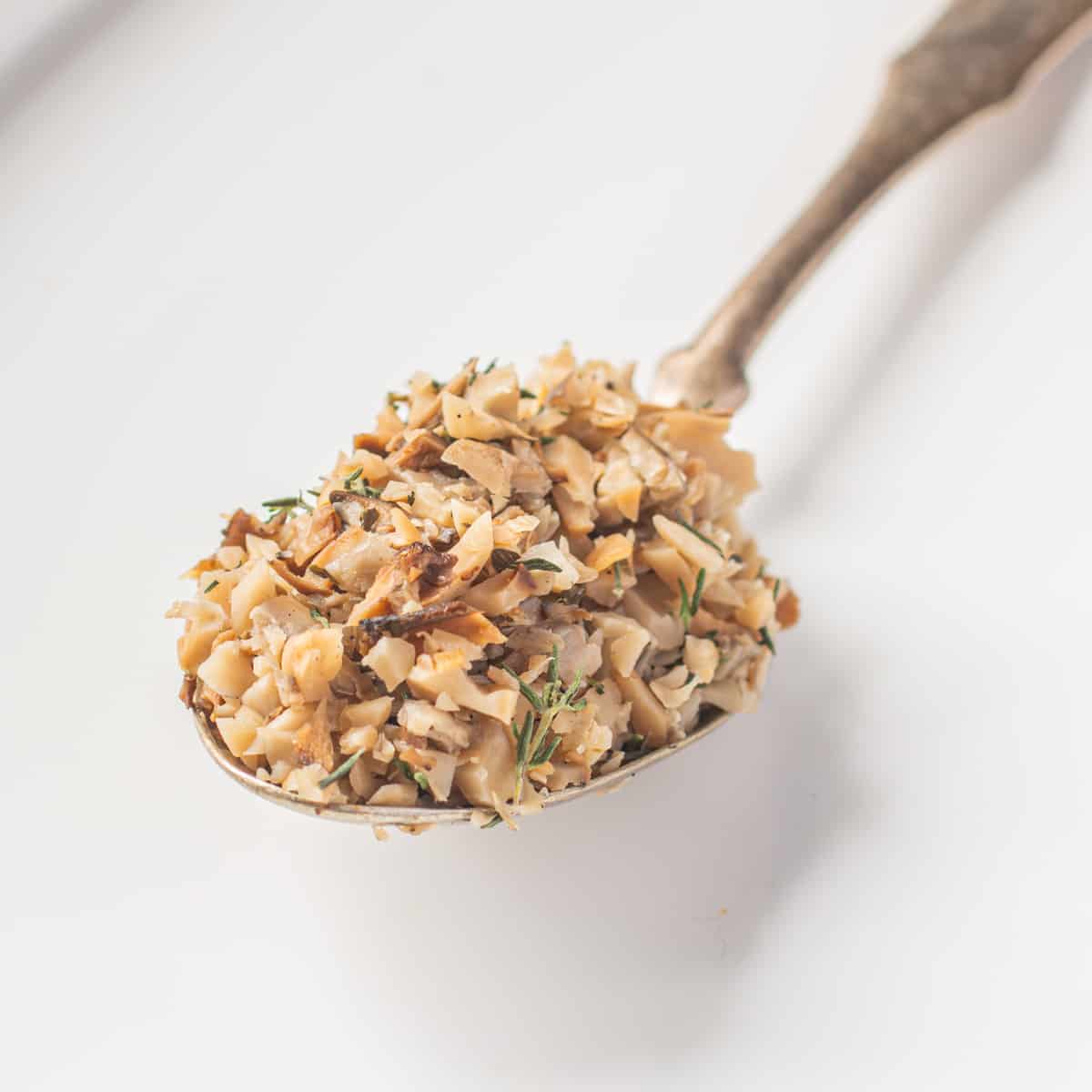
What is a Mushroom Duxelles?
A sort of mushroom concentrate, duxelles are finely chopped mushrooms cooked with shallot, fresh thyme, and sherry. It's best known as a mushroom stuffing used in beef Wellington. It was created by legendary French chef La Varenne, author of Le Cuisinier françois. Varenne named the dish after his boss, Nicolas Chalon du Blé, the Marquis d'Uxelles. It's a great addition to stuffings and sauces, and can be made with just about any mushroom variety.
How to Make Mushroom Duxelles
The mushrooms are finely chopped by hand using a heavy chef knife or pulsing in a food processor. Using a food processor is easier, but it's important not to over-blend them as it can turn the mixture into a watery mushroom paste.
If I'm working with large mushrooms like hen of the woods, I may grill them to save space and time in the kitchen before chopping. After the mushrooms are finely chopped you sweat some shallots add the chopped mushrooms and thyme, cook until the liquid is nearly evaporated, then deglaze with dry sherry.
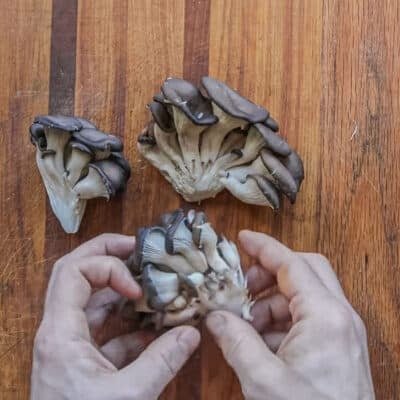
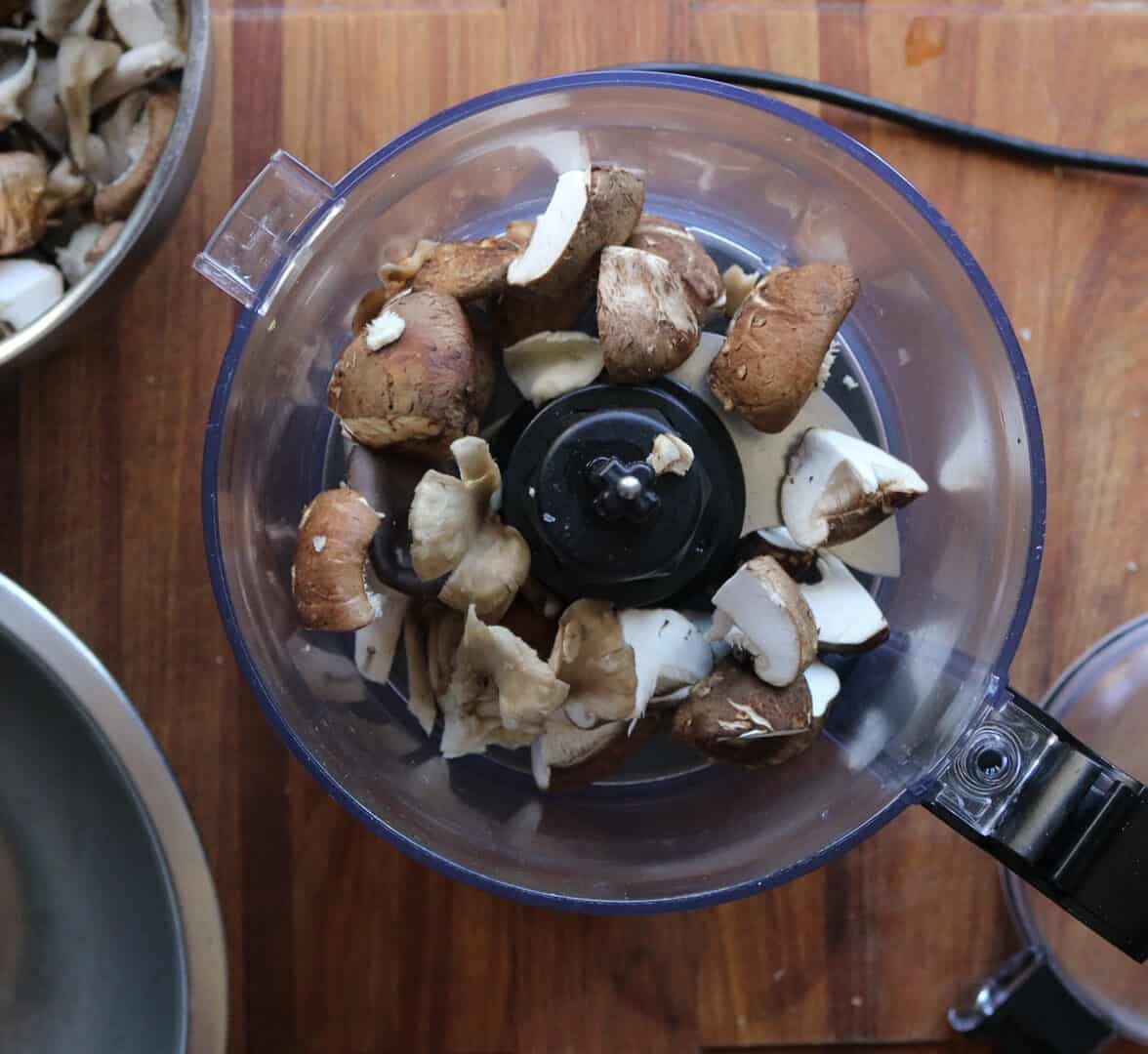
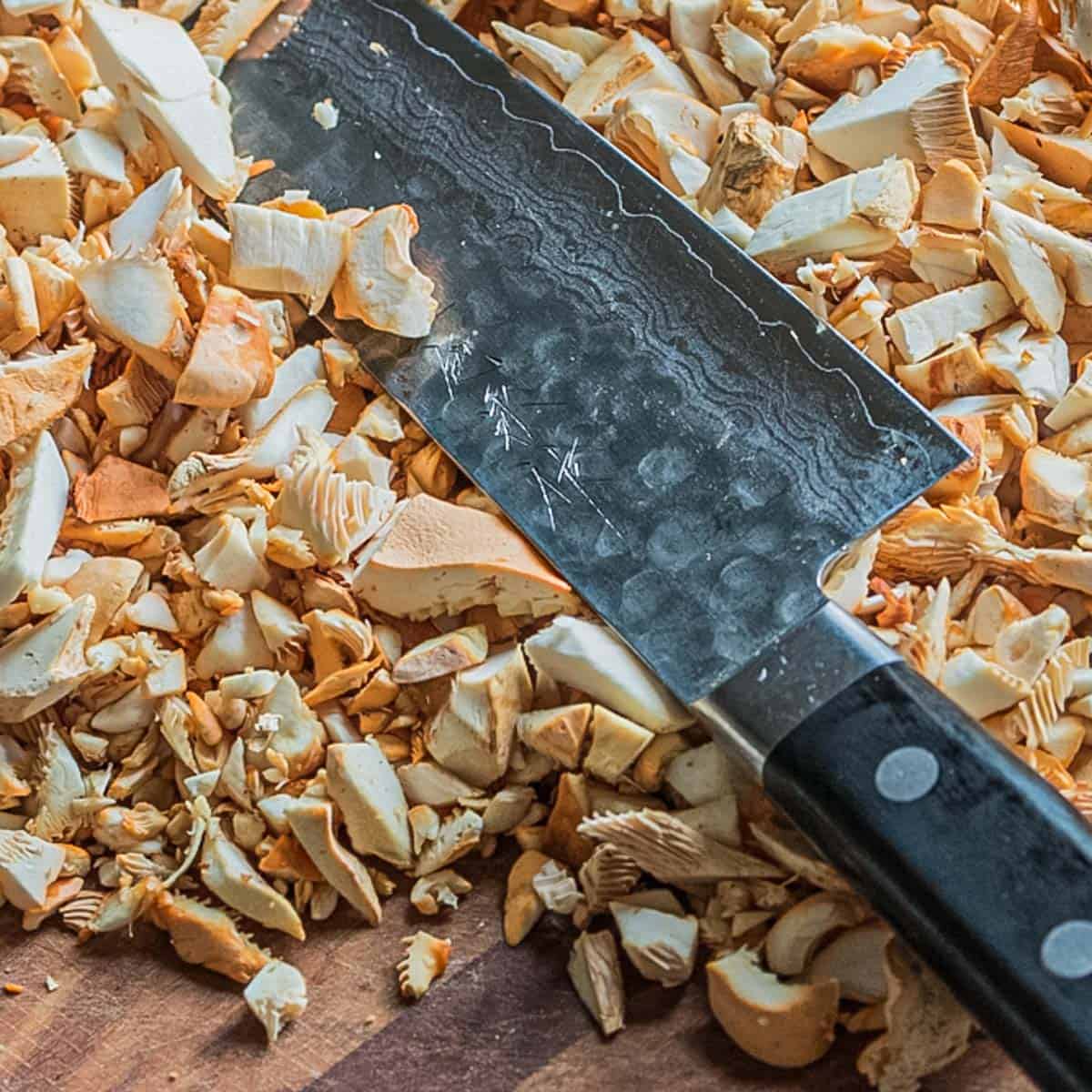
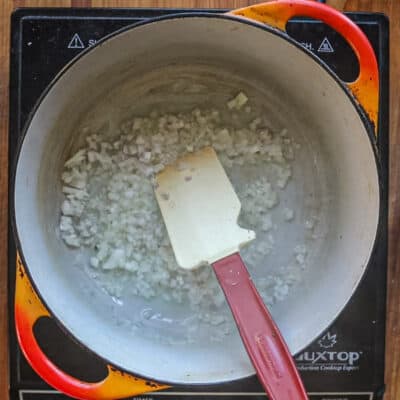
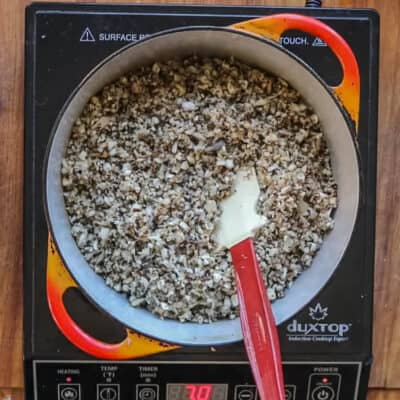
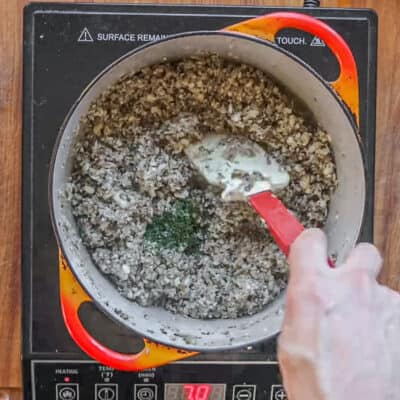
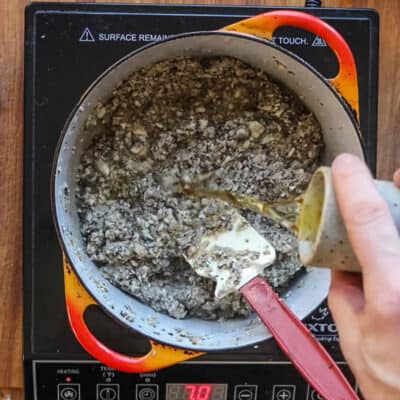
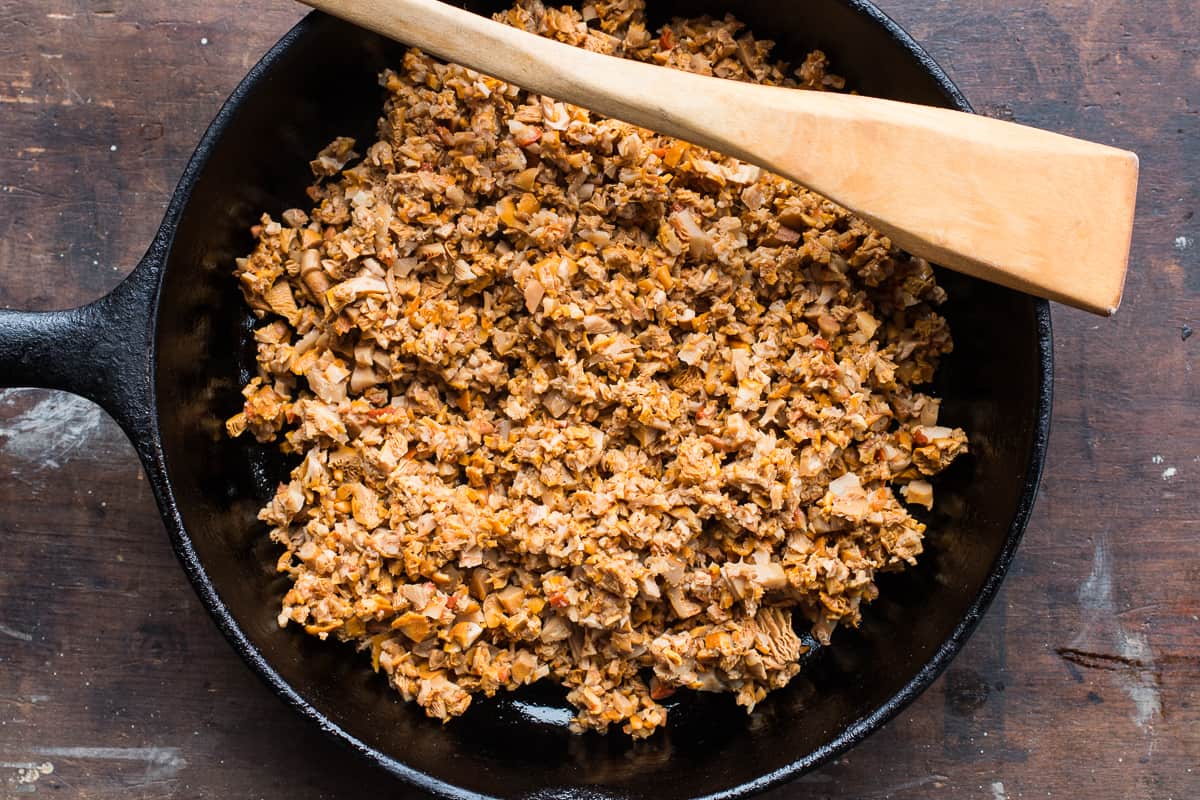
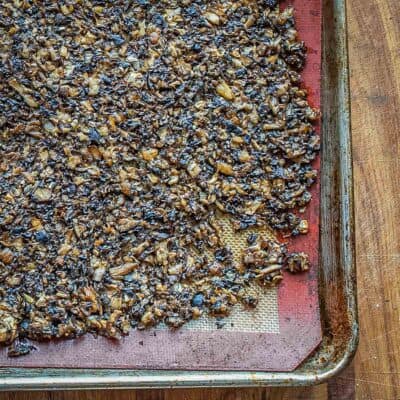
After cooking, they can be used in recipes or frozen for future use. I like to freeze them in ice cube trays for easy portioning.
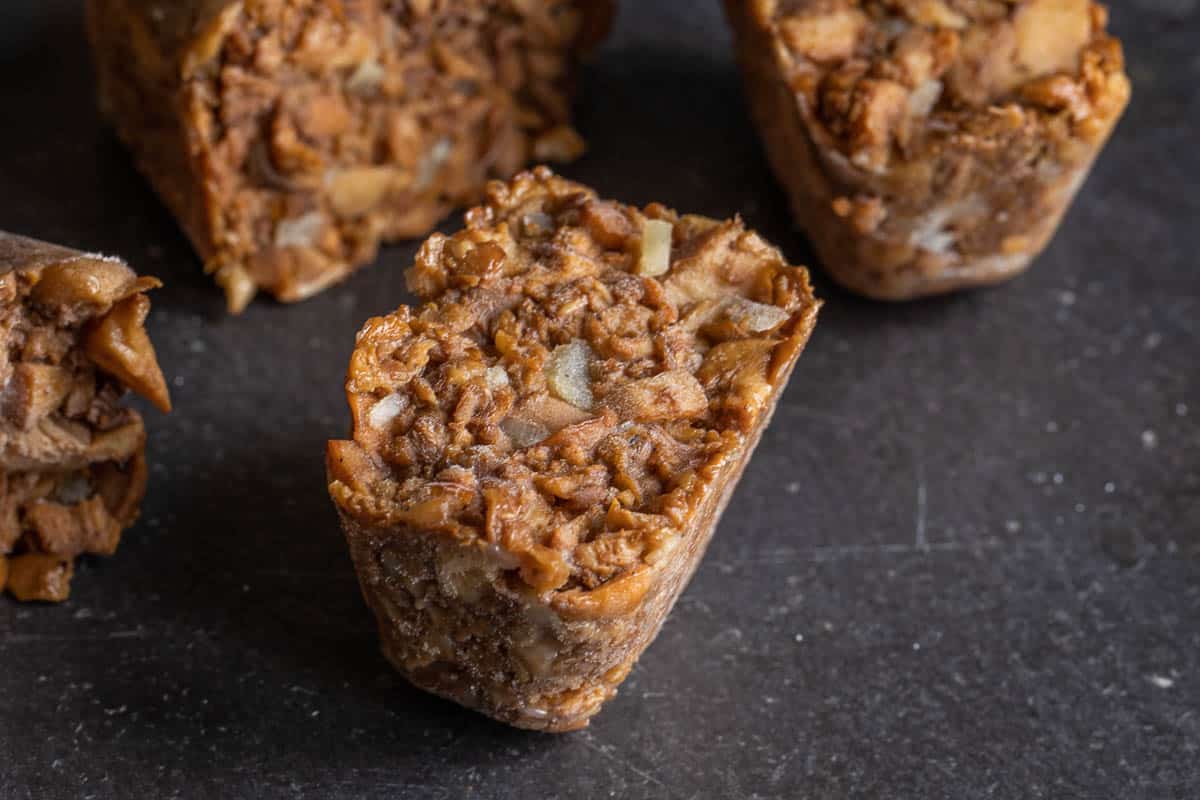
Some people wrap the mushrooms in cheesecloth and squeeze out the liquid, but I prefer to keep all the flavor in mine. If your duxelles seems wet you can bake it in an oven to dry it out and deepen the flavor.
Best Mushrooms For Duxelles
While just about any mushroom can be used, the best mushrooms are ones with a firm texture. If you're a forager or mushroom hunter, it's the perfect place to use large mushrooms like hen of the woods, sulphur shelf, dryad saddle or pheasant back mushroom. You can add dried wild mushrooms like porcini for extra flavor.
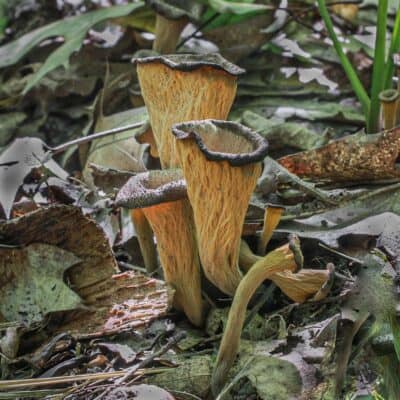
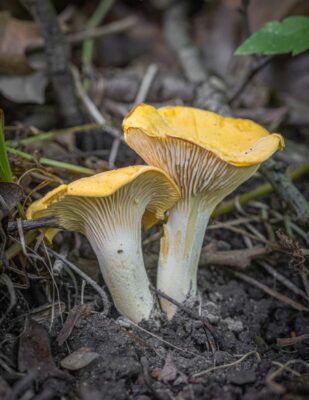
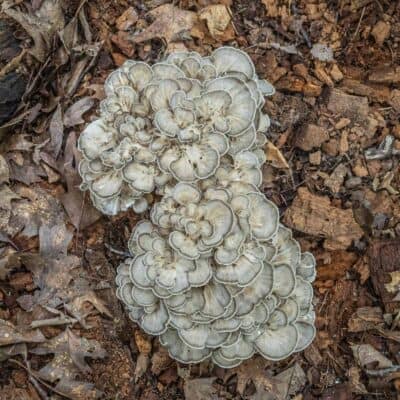
If you can't find any wild mushrooms, use a mixture of shiitake, baby bella, and king oyster mushrooms. Shiitake have the most flavor of cultivated mushrooms.
How to Use Mushroom Duxelles
Think of it as a mushroom concentrate you can add to all sorts of things. Here's some ideas.
- They're are an instant stuffing, mix them with a ricotta cheese for ravioli filling
- Add a spoonful to gravy and sauces.
- Spread on toast, they make a fine appetizer like a mushroom tapenade or mushroom bruschetta..
- Add them to cream of mushroom soup.
- Whisk into eggs for an omelet or scramble.
- You can also make dried mushroom duxelles.
Here's a few examples of how I use it in recipes.
Pot Roast with Mushroom Stuffing
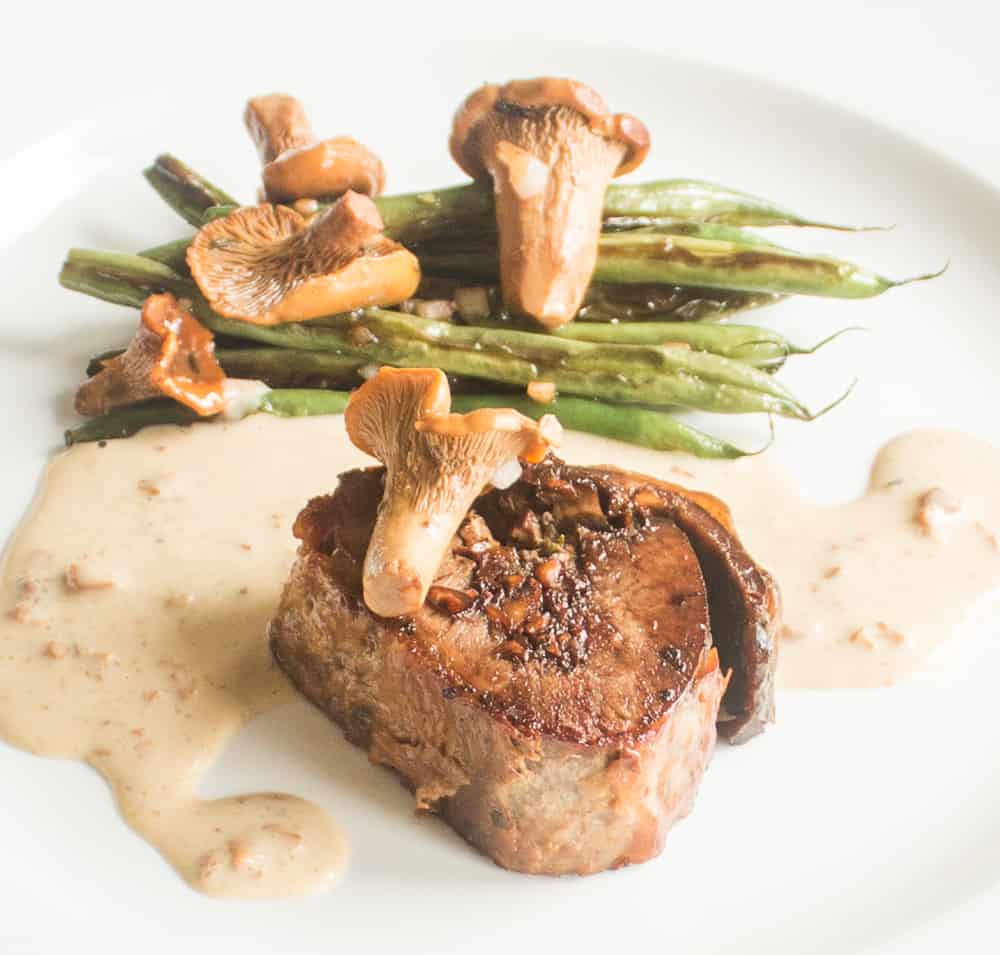
Mushroom Sauce For Fish
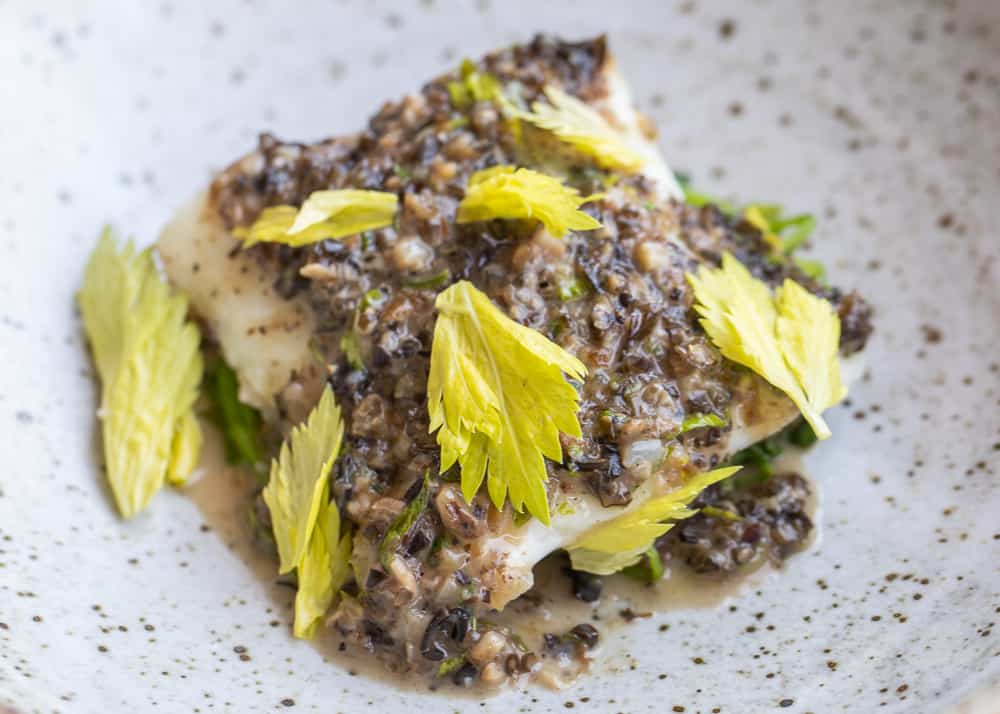
Mushroom and Beef Runzas / Bierocks
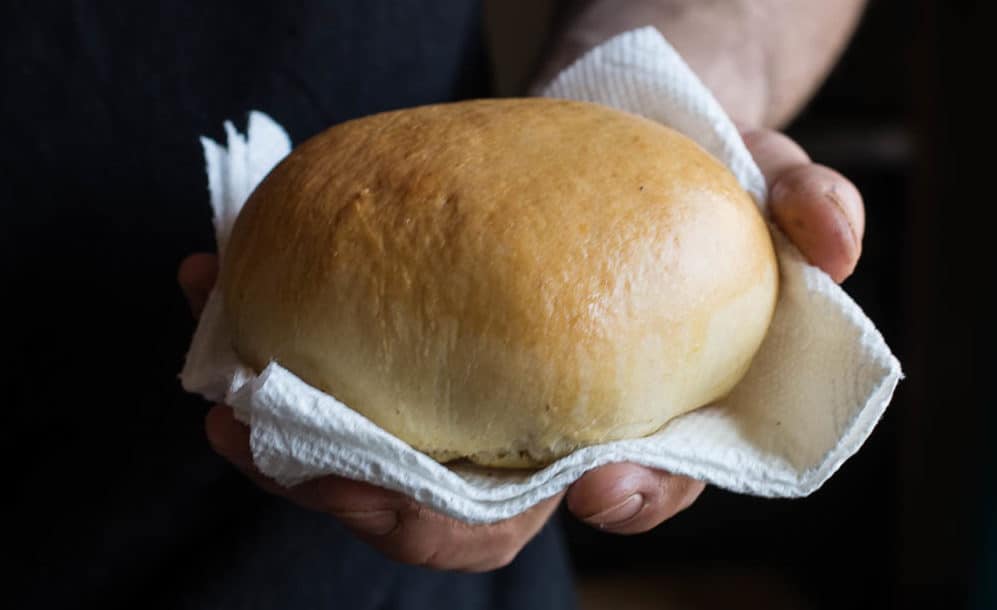
Chicken with Mushroom Pan Sauce
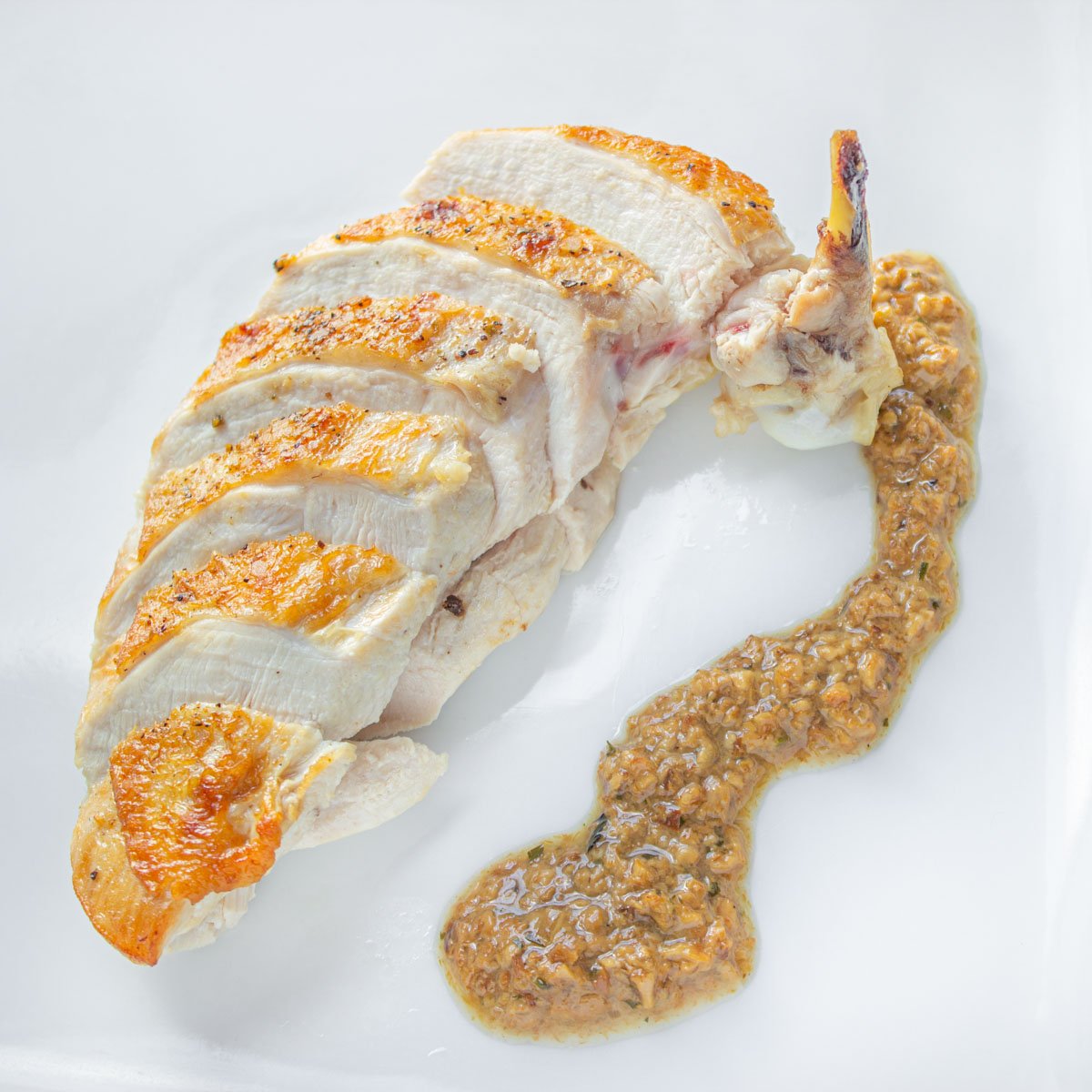
Mushroom Fritters
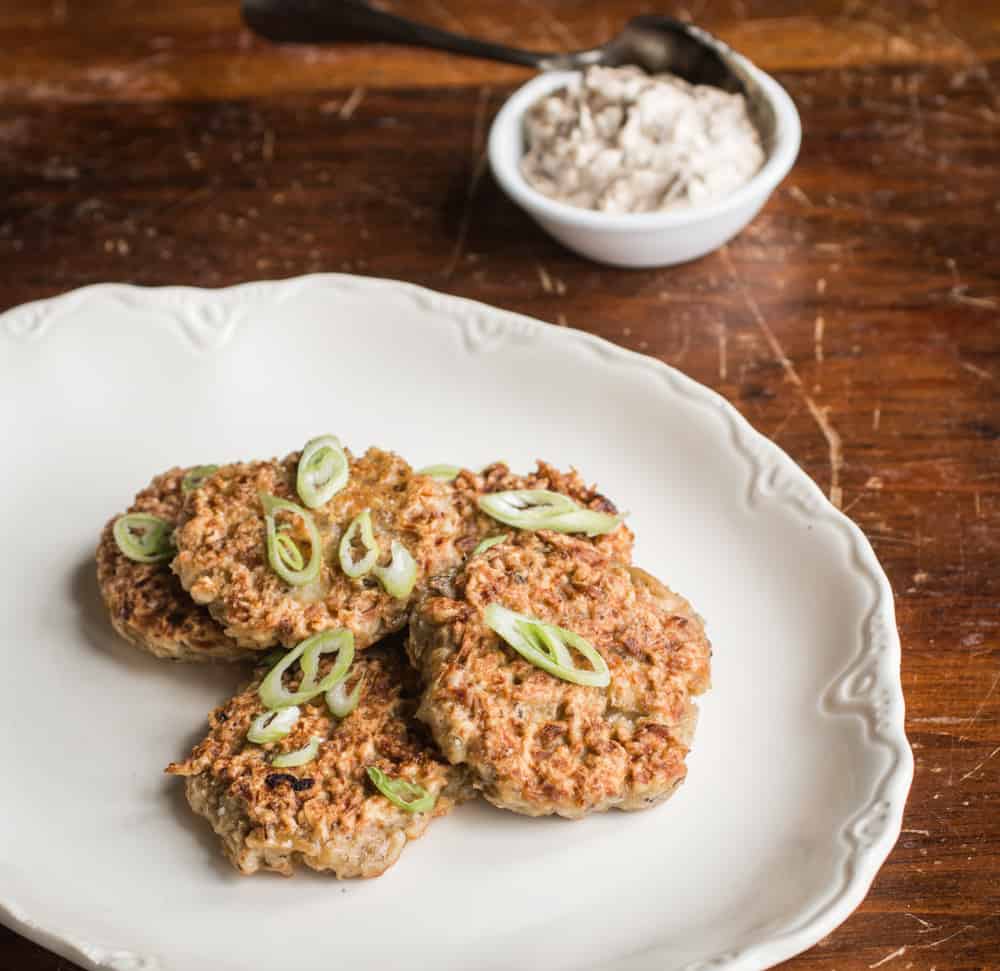
FAQ
Yes, they will keep in the fridge for 3-4 days.
Freezing is the best way to preserve the mushroom mixture. Pack it in ice cube trays and store in a resealable vacuum bag for easy portioning.
It is pronounced "Duke-Sell". That said, most American chefs call it "duck-sell"-just don't pronounce it like that in France.
The liquid should be almost completely evaporated and you should be able to see the bottom of the pan. If your mixture is wet, spread it on a baking sheet lined with parchment and cook at 400 F for 10 minutes to dry it out.
Wild Mushroom Duxelles
Equipment
- Chef knife or food processor
- 1 10 inch skillet
Ingredients
- 1 lb fresh wild mushrooms cleaned caps and stems roughly chopped.
- 1 tablespoon shallot diced ¼ inch or chopped roughly
- ½ teaspoon kosher salt
- ¼ Teaspoon fresh ground black pepper
- 2 tablespoon oil plus a little extra for roasting afterword
- ¼ cup dry sherry dry white wine can be substituted
- ½ teaspoon fresh chopped thyme
Instructions
- Finely chop the mushrooms by hand, or pulse the mushrooms in a food processor until they're finely chopped, but be careful not to over-process them. Traditionally you would chop them by hand, and it will give the best texture.
- Heat a large skillet over medium heat with the unsalted butter. Add the shallots and cook until translucent. Add the mushrooms and cook, stirring occasionally.
- Add a good pinch of salt, pepper and the chopped fresh thyme. Cook the mushroom mixture for a few minutes until the chopped mushrooms have released their liquid.
- When the mushroom liquid has evaporated (about 10 minutes) Deglaze the pan with the sherry or wine, then cook until the pan is dry. Taste the mixture and correct the seasoning for salt and fresh thyme until it tastes good to you.
- Cool and refrigerate or freeze for later. If the duxelles taste mild or watery, proceed to next step. This will not be necessary with some mushrooms.
Drying/roasting the duxelles to finish (optional)
- Spread the mixture onto a cookie sheet, spray or brush lightly with oil, then cut a cross-hatch pattern in them with a spatula.
- Bake for 15 minutes at 400F, or until you like the flavor, turning the mushrooms with a spatula to encourage even caramelization after 10 minutes.

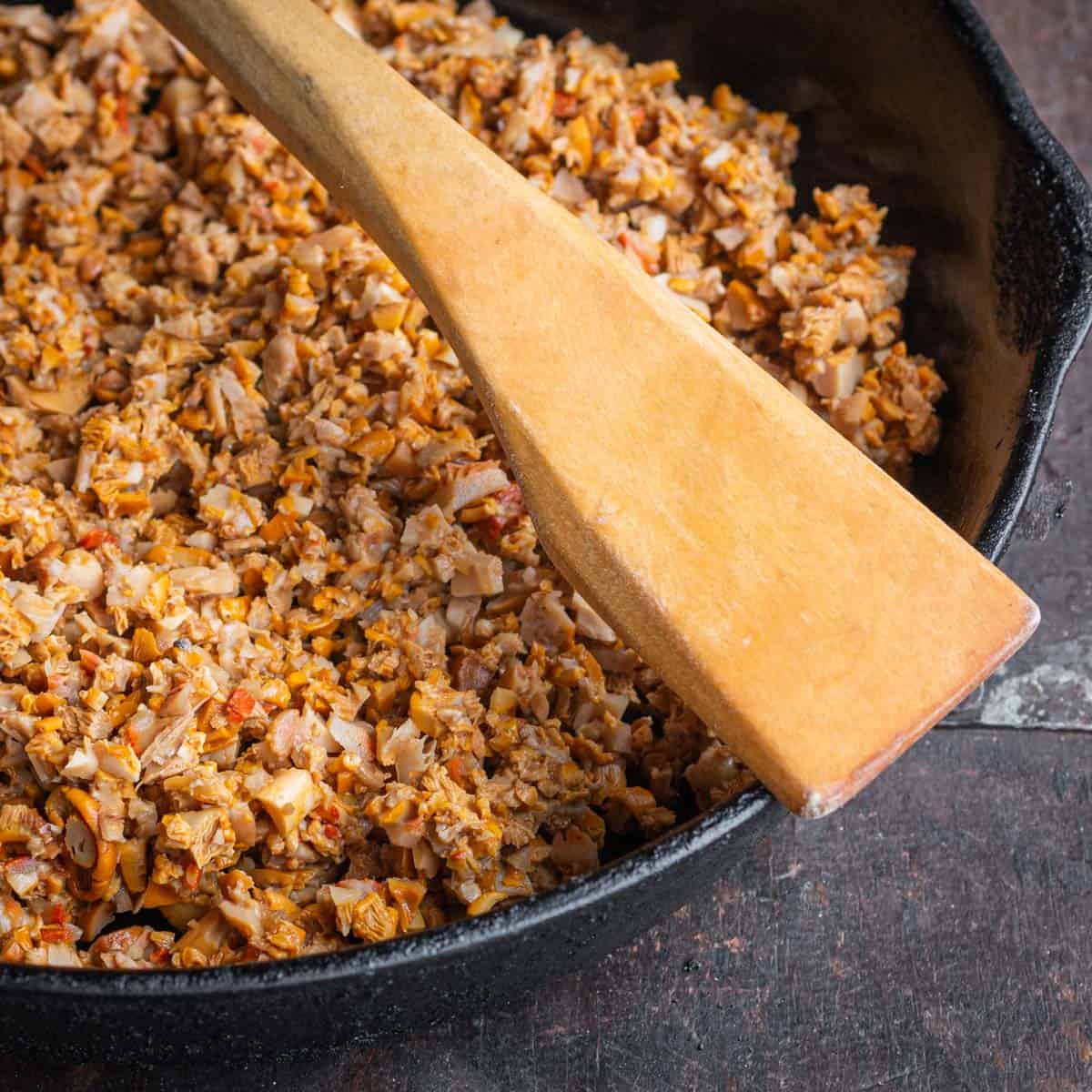
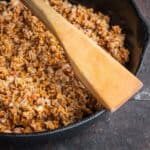
Bethany
I made this recipe with Bsp and immediately used a cupful in the risotto recipe you shared. Mushroomy, cheesy, delicious. Oh man. So excited to have a lot of these to freeze.
Thank you for the great recipe. I’ve literally never heard of duxelles before this week and now?? I think duxelles will be my go to when I have a ton of mushrooms to store. Thanks.
Alan Bergo
And now you know! It's a great treatment for lots of mushrooms.
Lanya
Wow, I haven't thought about bierocks for at least a decade, though they were a school cafeteria staple in the small Western Kansas town where I grew up -- which, yes, was settled by Volga Germans. Thanks, Elena, for taking me back!
Gloria
Harvested my first Chicken of the Woods and prepared your Wild Mushroom Duxelles recipe. I had about 10 ounces of COW. I only harvested/used the tender sections as you described. When I cooked there was little to no moisture. I am wondering if it is due to how I processed them before hand. They weren’t very moist to being with. But here is what I did. I wiped my mushrooms off with a damp paper towel and used a magnify-glass to look for those microscopic worms and removed. (There were only a few of them). I then laid out the mushrooms on a cookie sheet lined with paper towels and put in a brown grocery sack closed up and placed in the refrigerator. They were in the fridge for 30 hours. Then I processed by hand dicing all the ingredients and prepared per the recipe.
Due to them being so dry to begin with, mine doesn’t look as moist as your Duxelles in the video. Mine doesn’t hold together. Looks great just not binding. Is there any issues, do I need to add moisture to make is creamier? I want to make the ravioli recipe with Duxelles.
Thank you for any input you might have.
Alan Bergo
Hi Gloria! So, the water content of some mushrooms can vary drastically due to environmental conditions, the age of the mushroom, or both. If your mushrooms seem dry, you can give them a good rinse in water while you clean them. Chicken of the woods is one of the most variable when it comes to water. Last week I cooked some that, after a few minutes in a pot with nothing else, were completely covered in their natural water once they started to cook. Others can be so dry they would just burn if you cooked them like that. If your duxelles comes out dry, you can always add a splash of water or stock to it, and then cook it some more. It will help to add egg and breadcrumbs if you want to use them for a stuffing. Let me know how it turns out for you.
Charles D Duncan
I had always been intimidated by duxelles--seemed so fancy, plus I couldn't pronounce it. Now zat I know eet ees duck-sail, I will sound like a French chef, n'est pas?
Silliness aside, the product came out great from 1.5 # of hen of the woods and the several ways you suggest to use them already has our mouths watering. Thanks again!
Alan Bergo
Hey glad it worked for you.
Rafe
Wondering about the need for butter vs. oil in this recipe? Looked like in the ingredient list you have oil but at some point you mention butter instead or in addition. I want to try making it but don't eat dairy.
Alan Bergo
No it’s just oil
Don Greenberg
Great idea, your suggestion to roast for 15-20 minutes is an excellent idea to evaporate even more water. I have a prolific source of honey mushrooms every late fall here in San Francisco, and this helps process the 30 plus lbs that are harvested. I do find, though, that a little bit of carmelization is a good thing, but too much can detract slightly. So, keeping the temp at 400 degrees is important.
Also my tip -- at least for honeys -- is to start the saute proess without oil, and drive off as much water as possible before adding the oil/butter. This gives a very nice bit of carmelization, and then the mushrooms quickly absorb the oil when added.
Alan Bergo
Yes, depending on the species and the amount of rain you've been getting you can do different things here. I should add a note about dry sauteeing. Thanks.
Julia
Delicious results! I am having a problem freezing, though. Because I am cooking off all the liquid as the recipe directs, I can't get the duxelles to keep a shape in silicone muffin cups/ice cube trays. What am I doing wrong?
Alan Bergo
Julia, the water content of mushrooms can vary greatly. The mushrooms should have a lot of water removed, but should not seem dry or crispy at all. If that is the case, you can cook it with a splash of stock or water to soften them a bit, then just pack them very firmly into the freezing vessel you'd like to use, ice cube trays, muffin cups, etc, freeze, remove, and vacuum seal portions to freeze again and pull as needed. Let me know if this makes sense.
Julia
Yes thanks for the quick and attentive reply. I have loved using your site, info and recipes this season. Thanks for all you publish!
Janet
What do you use this on/in?
Alan Bergo
Stuffings, raviolis, pan sauces, fillings, and other things I describe in the post if you read it.
Bob
Ummmm(ami)… Long time forager. Always passed on the BSP waiting for hens. Came across this tree that fruits BSP a month before hens each year. Just finished making the broth. I feel like a toad stool for missing out on this gem all these years. So much tastier than hens. The yield for the soft part is low, but still totally worth it, especially with the broth. Thanks for pushing my mushy limits!
Alan Bergo
Thanks Bob, glad it worked for you.
Susan
Tried today with some COW’s & little brown mushrooms, few shiitake. Seem very dry, I realize COW’s are dry. Not browning like I would like may have to put in oven yet. Thoughts?
Alan Bergo
Totally fine to add some oil and bake them a little to brown. COTW are very dry, and collections can vary greatly in water content. Sorry it took me a bit to get to this here. Let me know if I can help.
Sharon Bender
So glad to have found you, forager chef Alan! You've confirmed what I thought was hen of the woods & is instead BSP growing in my yard! They are so tasty! Now I have some terrific sounding recipes to try with them! Many Thanks!!!
Alan Bergo
Thanks Sharon.
Aaron J
Made this with black staining polypore. It is so fricking tasty! Love it. Has this pepper like flavor to it I've mixed with into beyond meat and I've had it in risotto with the bsp broth. Thanks Forager Chef!
Alan Bergo
Great. I'm really happy you made it with BSP too, underused mushroom there.
Ashton Crain
If I were to use fresh ringlets honey mushrooms for this, would I need to dry them first or is fresh fine?
Alan Bergo
That's fine. I don't often make duxelles with dried mushrooms, but you can. With honey's you just want to make sure you cook them thoroughly, and duxelles will do that for you.
MC
Lovely! Thank you for the recipe and knowledge accompanied! When preparing older or buggy chanterelles for a duxelles, do you use all parts that don’t have physical bugs or do you discard any parts like the stem that may be more bug damaged? We have SO many bug damaged chanterelles and I’d love to know more about how to utilize them! Thanks!
Alan Bergo
If they're very damaged I would dehydrate them. How much of the mushroom tissue you use depends on the extent of the damage/personal preference.
Karl
Have you tried this with oyster mushrooms? I found a few pounds of oysters the other day and this seems like a great way to put them up.
Alan Bergo
Oysters will be fine.
christian biesbrouck
Can I use images for educational purpose?
Please advise
Elena
I made this back in October when I found several pounds of Hydnum umbilicatum. It was my first time picking them, somehow I didn't learn about this mushroom earlier (what a shame!). And since I was cooking them for the first time, I decided to seek some professional help 🙂
Thank you so much! It's delicious!
I used duxelles mostly for "pirozhki" filling. Pirozhki are small 1-2 oz pies made of yeasted dough and any sort of filling, savory or sweet, which is completely enclosed in dough. It's a Russian dish, but I'm aware of at least 2 versions that exist almost exclusively in Nebraska and Kansas, called runza and bierock respectively. I believe it was brought here by Volga Germans.
Anyways, they turned out exceptionally well! Taste of duxelles reminds me of what they call "mushroom caviar" in Russia, but way more sophisticated. I will definitely keep this in mind next time I have pounds of fresh chanterelles or hedgehogs on hand. I hate freezing them since they taste pretty horrible and texture is just bad after a couple of months in the freezer.
Leslie
Needs tarragon to be the best of the best!
Alan Bergo
Tarragon isn't traditional, but it's good.